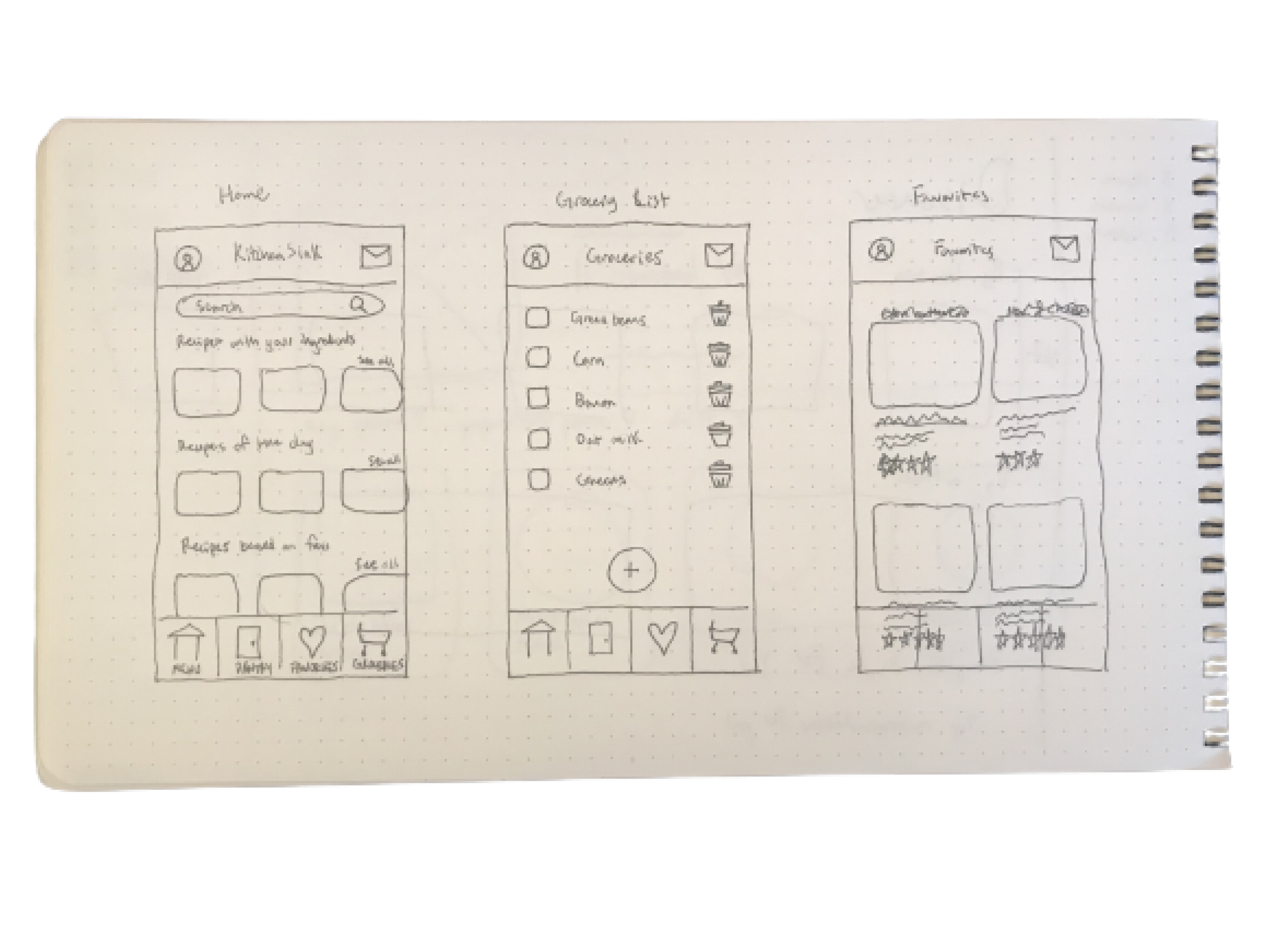An app that gives recipe ideas based on ingredients the user already has.
Overview
The Problem
The average U.S. household wastes 31.9% of the food its members bring home. Busy schedules force many people to throw away food that they didn’t have time to cook, which in turn increases carbon dioxide levels in the atmosphere.
The Solution
KitchenSink helps its users waste less food with the help of easy-to-make recipes based on ingredients they already have, and offers an accompanying in-app grocery list.
Research
Research Goal
My research goal was to understand the routines and preferences of at-home cooks in order to build a comprehensive cooking app that increases productivity in the kitchen and at the grocery store while also reducing food waste.
Methodology Used
To get answers to the questions I had about cooking habits and the recipe app industry, I conducted user interviews and completed a competitive analysis.
Competitive Analysis
Key Takeaway
From the competitive analysis, I found that the apps were similar in terms of their:
Recipe layouts
Social networking features
Grocery list features
Rating systems
Ability to save recipes in-app
General navigation
User Research
Research participants were between the ages of 27 and 59, and came from a range of career stages, age ranges, music interests, and ethnicities.
Interview Questions
Do you ever follow any recipes? How do you find out about them?
How often would you say that you have to throw out old food? And what are the reasons for doing so?
Do you typically use a grocery list when shopping? How do you typically decide what goes on the list?
Key Takeaways
80% of participants cited the inability to use ingredients completely in recipes as a factor for throwing out old food.
80% of respondents shop with a grocery list. Of those, 75% use a “notes” app on their phone for the list.
60% of users cook from recipes that incorporate food staples that they always have around the house, such as beans or rice.
Opportunity Statement
I’d like to explore ways of building out a search filter that prioritizes which ingredients are incorporated because users prefer to cook with ingredients they already have.
Key Takeaways
HMW#1: How might we create convenience and accessibility in a grocery list feature?
HMW#2: How might we enable users to shop for ingredients that they don’t have in a recipe?
HMW#3: How might we prioritize search results based on little input (i.e. ingredients) from the user?
Design
Sketches
With so many features to be implemented, it was important to implement a high level of cohesiveness across the app from the inception of the design phase.
Low-Fidelity Wireframes
Because KitchenSink was designed as a mobile app, I placed a large focus on utilizing built-in components. The use of voice commands and touchscreen interactions such as carousels simplify the user’s experience while increasing accessibility.
UI Components
One of the biggest challenges of this project was to establish a colorful user interface without sacrificing accessibility or ease of use. The forms and cards are designed to scale across various mobile screen sizes.
High-Fidelity Prototypes
In addition to refining the alignment in the layout, recipes and pictures were carefully curated to support the look and feel of the app. Colors and typography were adjusted where needed to create a cohesive display.
Test
To test my prototypes, I conducted online and in-person moderated usability testing with the help of five participants between the ages of 27-63. Three task flows were analyzed to test for errors and general user impressions, and users were interviewed after they performed the tasks.
Task Flows
Revisions From Usability Testing
The biggest issue that I ran into during the user testing phase was confusion regarding how to search for recipes using ingredients that the user already has. For this reason, I have included an option for users to search for recipes while on the “pantry” screen.
Additionally, users requested that some version of a previously used grocery list be saved for future use.
Conclusion
The main item of focus after the usability testing phase was on perfecting the spacing and alignment throughout the app. There was a lot of information and content to organize here! But the devil is in the details.
The Solution
Key Takeaway
Overall, the “search by ingredient” feature and filters in the search results accomplish the project goal of providing a tool that reduces food waste in the kitchen, but I would be interested in developing this idea further. As the next step for this project, I would research recipes or cooking styles that reflect a more sustainable approach in the kitchen and feature those items prominently in the app.





























